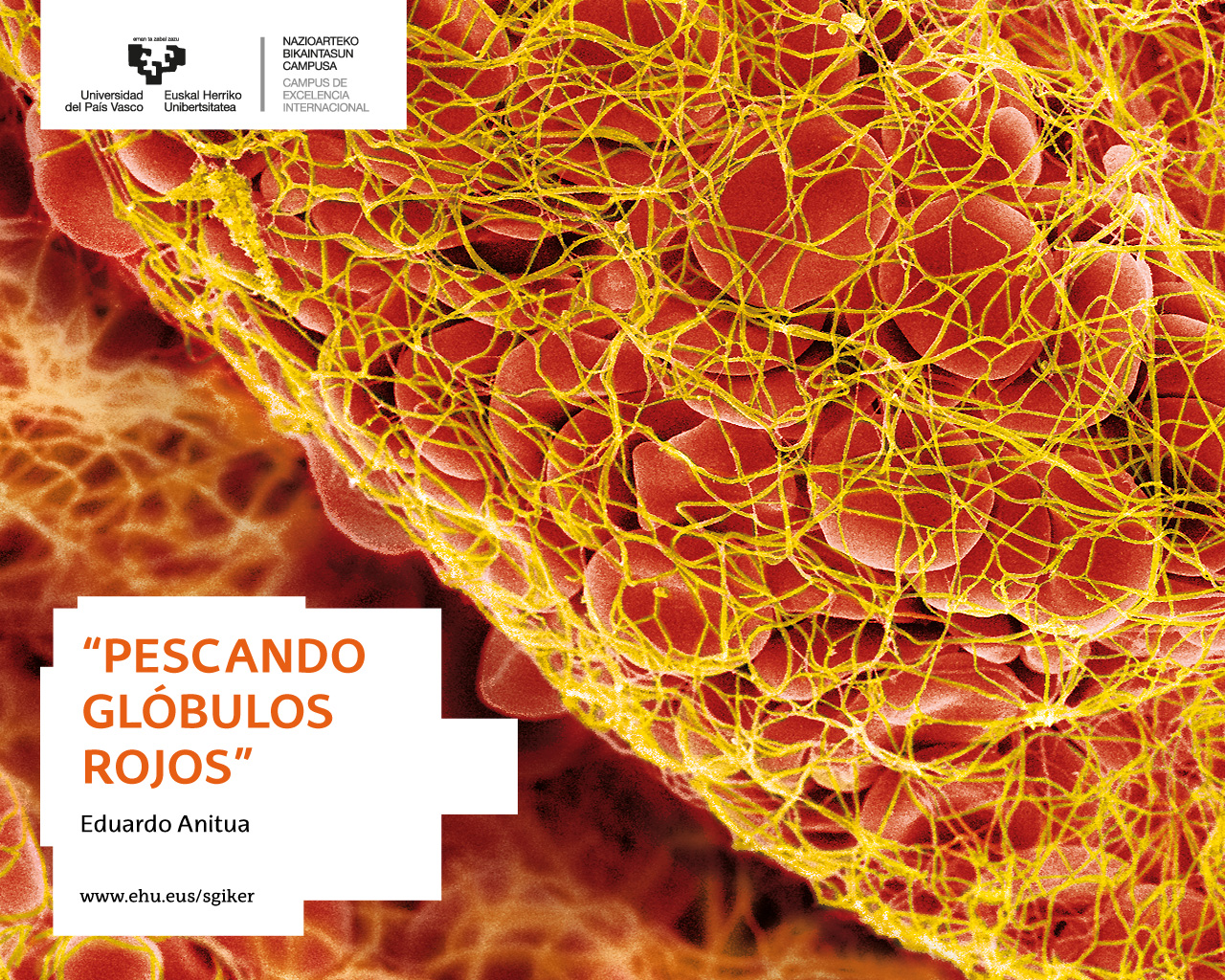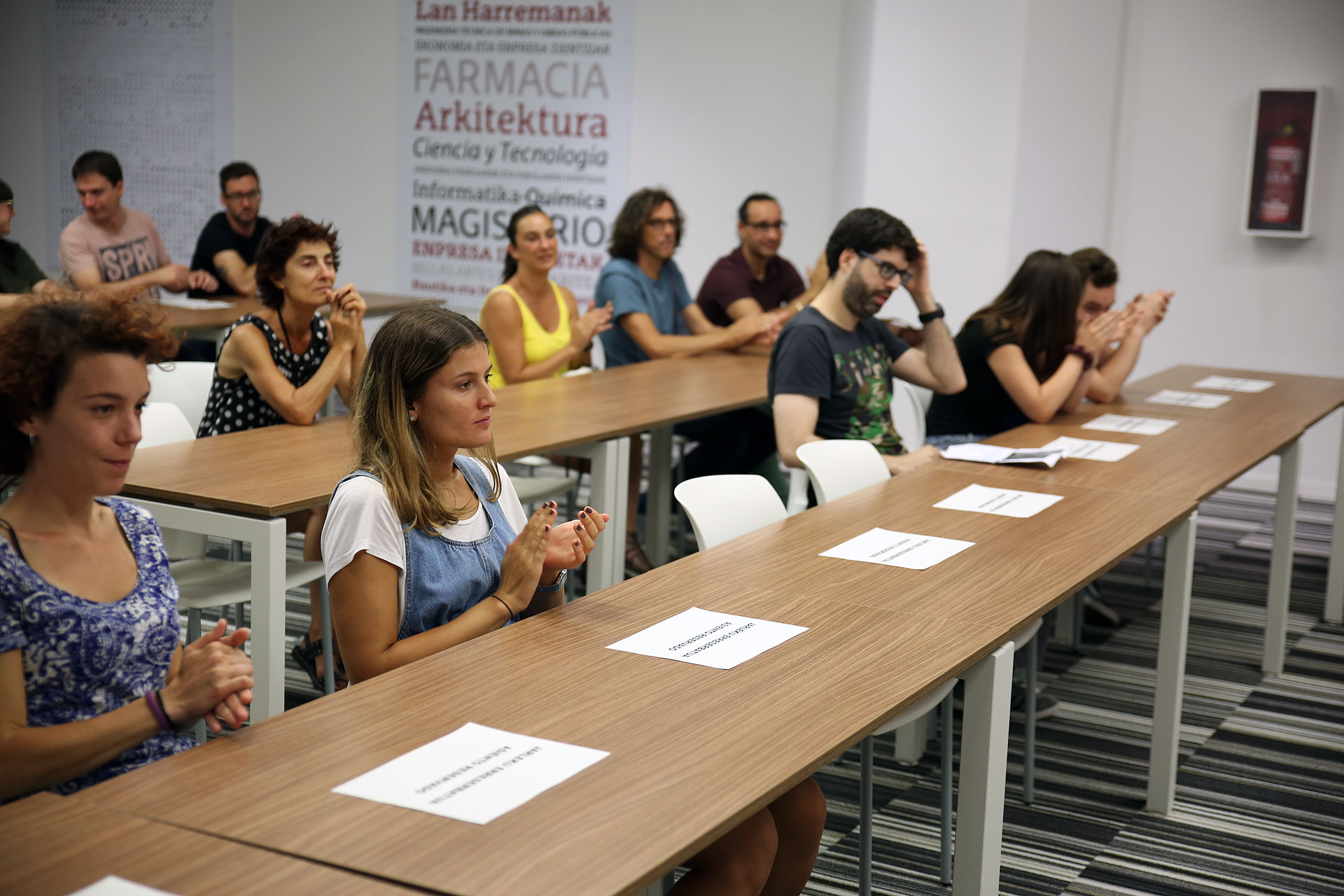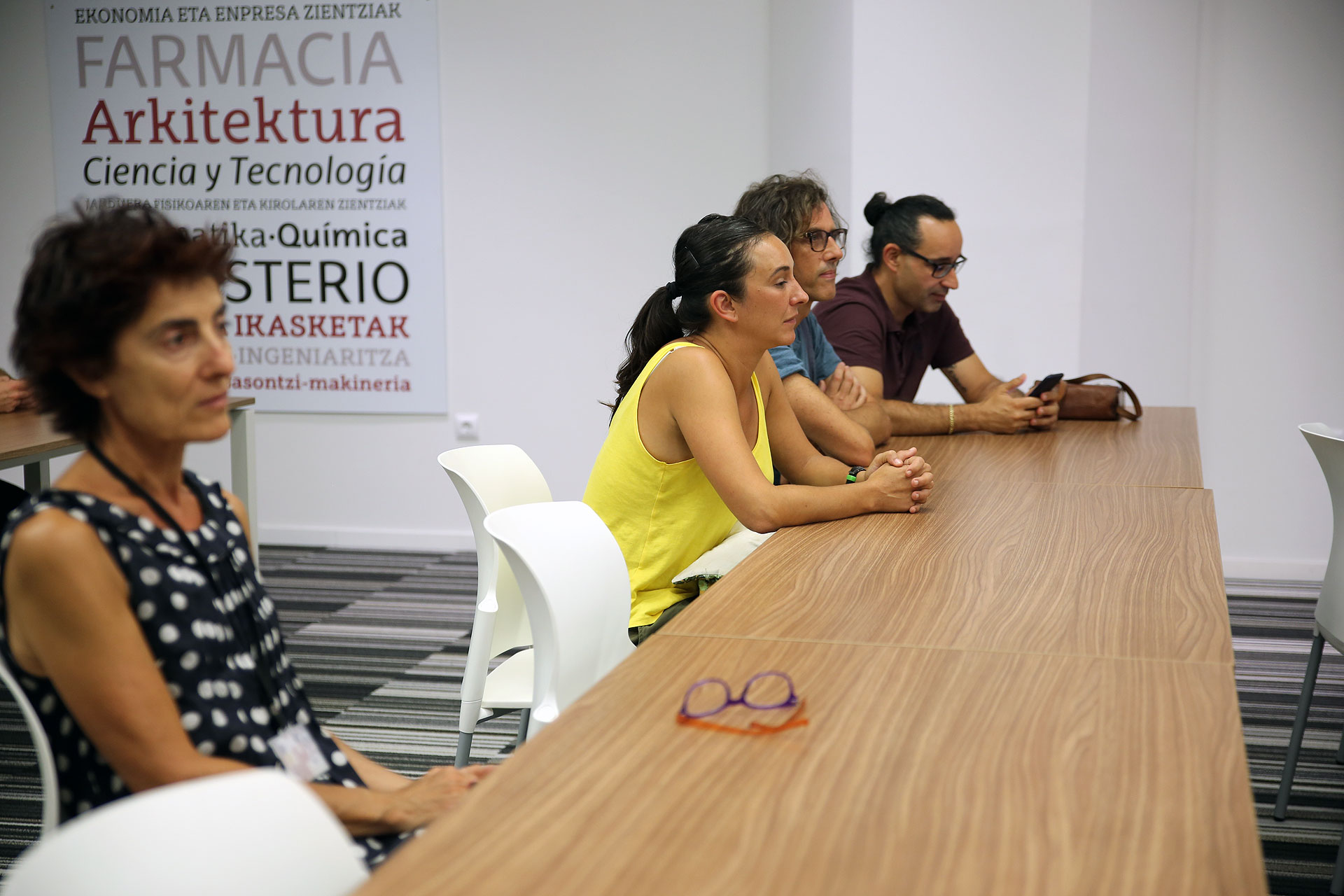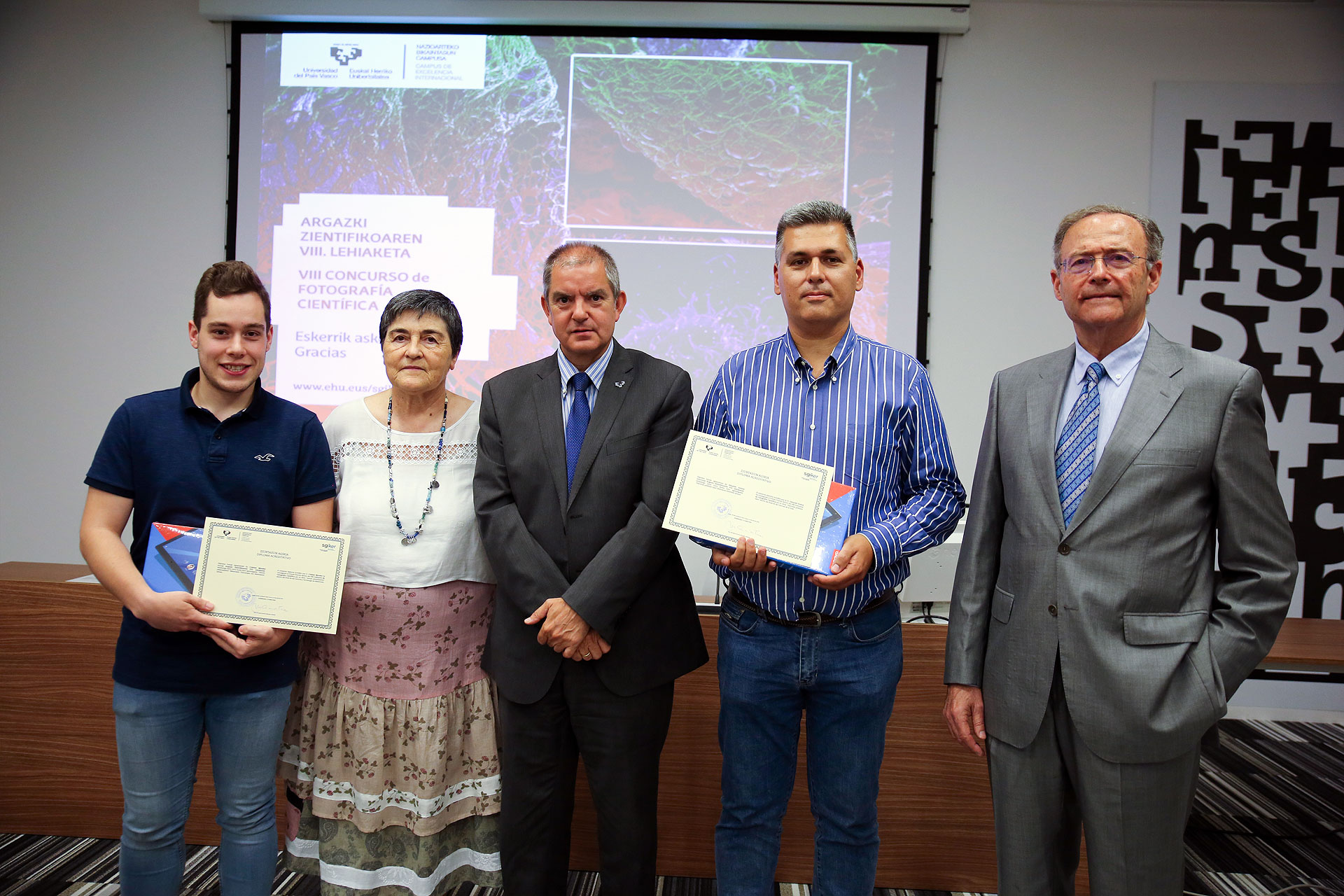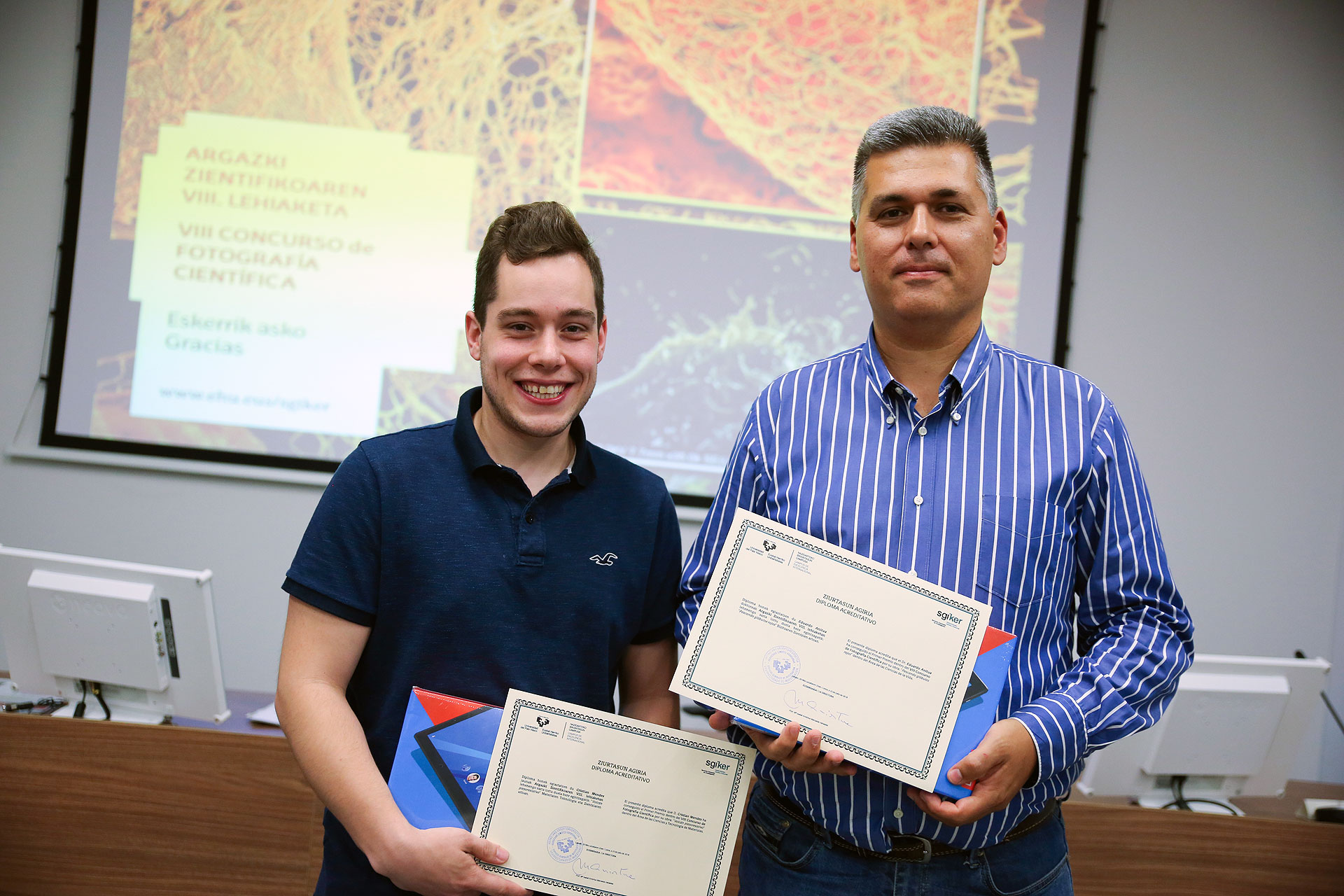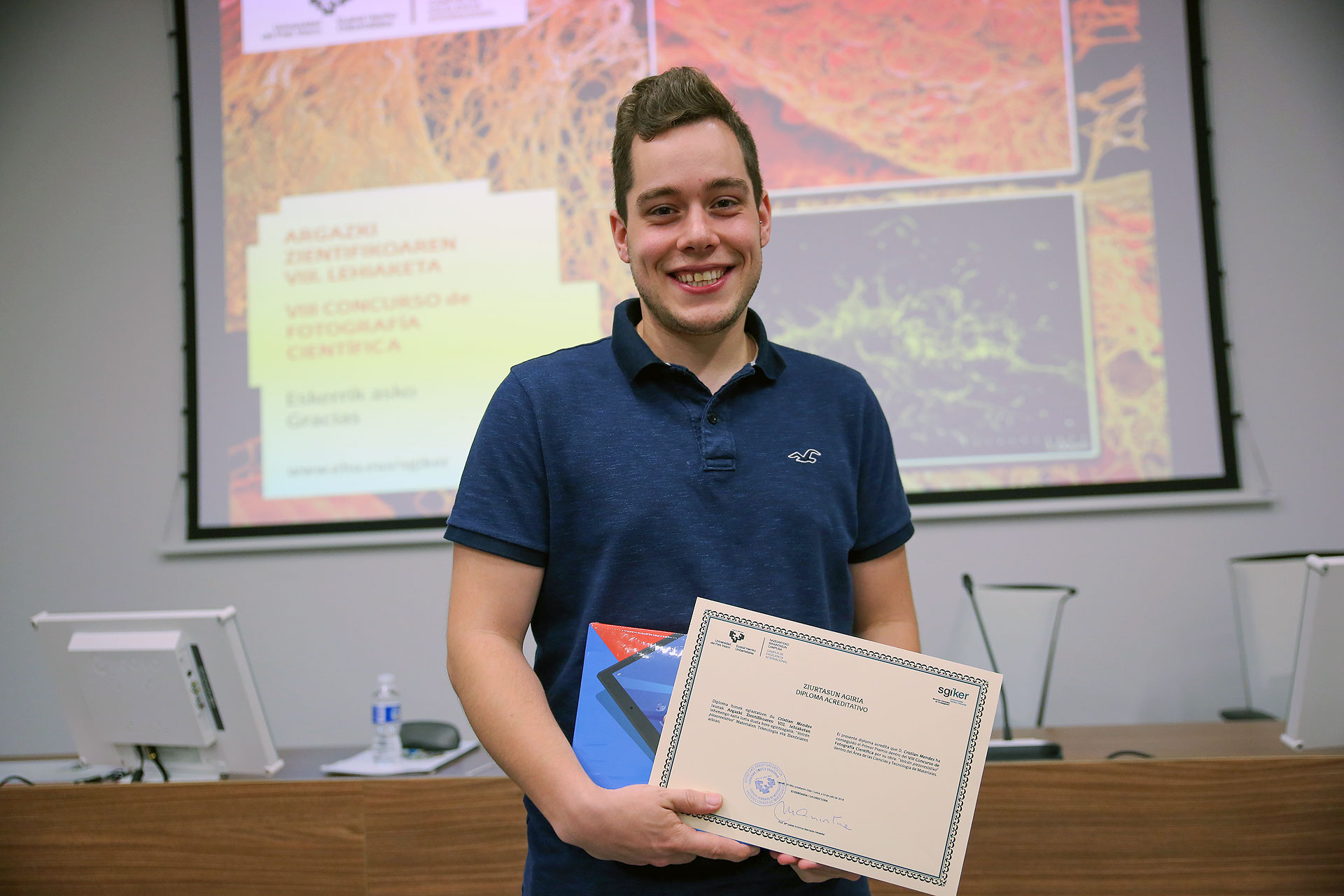The SGIker delivered the prizes of the VIII Scientific Photography Contest (23/07/2018)
First publication date: 27/07/2018

Eduardo Anitua and Cristian Mendes, winners of the VIII Scientific Photography Contest of the SGIker
The images "Fishing red blood cells", by Eduardo Anitua, and "Piezoresistive volcano" by Cristian Mendes, have been awarded in the eighth edition of the Scientific Photography Contest of the General Research Services, SGIker, in the modalities of Science of the Life and Materials Science and Technology, respectively.
The award ceremony took place on July 23, 2018, in the Board Room of the Central Library of the Bizkaia Campus (Leioa area), under the chairmanship of the Vice-Rector of Research of the UPV/EHU, Professor José Luis Martín , the director of the SGIker, Professor Maribel Arriortua, and the Professor of the Faculty of Medicine and Dentistry, Professor Juan Miguel Aréchaga. In the act, the authors of the awarded photographs have explained the meaning and the process of creation of their works, and they have been given the accreditation diploma along with a next-generation tablet.
On this occasion, the jury, chaired by the Vice Chancellor for Research and trained by expert staff in the different scientific areas involved, has had to choose the winning photographs from a total of 68 images submitted to the contest by 49 researchers, of which 72% have done so in the field of Life Sciences, and 27.9% in the Science and Technology of Materials field. As in previous editions, the decision of the Jury has been especially difficult because of the high quality of the works presented, highlighting those awarded for their visual impact, technical difficulty, scientific result, originality, design and artistic perspective, and the didactic style of each one.
The image "Fishing red blood cells", taken by the researcher Eduardo Anitua, from the laboratory of regenerative medicine-BTI Biotechnology Institute, shows a blood sample in which the fibrin network is observed fishing red blood cells. The blood does not only serve to bring oxygen to our tissues, but also fulfills various functions. In it, there are multiple molecules that contribute to the regeneration of tissues, which is why it is the "raw material" suitable for personalized regenerative medicine. The image has been colored by the graphic design department of the BTI Biotechnology Institute, to differentiate, with greater clarity, the different components. The photograph was recorded in an Electronic Scanning Microscope (SEM) of the SGIker.
In the category of Science and Technology of Materials, the winning work, Piezoresistive Volcano "by the researcher Cristian Mendes, from the Department of Physical Chemistry of the Faculty of Science and Technology of the UPV/EHU, shows carbon nanotubes (CNTs) embedded in a Polymeric matrix Polymer composites / CNTs are commonly used as piezoresistive material, a type of "intelligent" material that, when undergoing mechanical deformation, provides a change in electrical resistivity.Paleszoresistive materials are used as sensors and actuators in areas of robotics or electronics According to its author, achieving a good dispersion of CNTs in the polymer matrix is fundamental to ensure a good piezoresistive behavior ", and scanning electron microscopy is the most appropriate technique to study this dispersion. with an Electronic Scanning Microscope (SEM) of the SGIker.
In the area of Life Sciences, the committee of experts has been formed by the following doctors: Olga Peñagarikano (Dept. of Pharmacology), Luisa Ugedo (Dept. of Pharmacology), Guillermo Quindós (Dept. of Immunology, Microbiology and Parasitology) ), José Ignacio López (Dept. of Medical-Surgical Specialties and Pathological Anatomy H. Cruces), Nerea Legarreta (Dept. of Drawing, Faculty of BBAA), and Itsaso Maguregui (Dept. of Drawing, Faculty of BBAA).
In the field of Materials Science and Technology, the jury was made up of doctors: María Luisa Fernández Gubieda (Dept. of Electricity and Electronics), María Teresa Guraya (Dept. of Mining and Metallurgical Engineering, Materials Science.), Gabriel Alejandro López (Applied Physics Dept. II), Xabier Murélaga (Dept. of Stratigraphy and Paleontology), Itsaso Maguregui (Drawing Dept., Faculty of BBAA), Guillermo Quindós (Immunology, Microbiology and Parasitology) and Nerea Legarreta (Dept. of Drawing, Faculty of BBAA).
All the photographs submitted to the contest can be seen in the following web gallery. SGIker thanks the entire research community for their interest in participating in this new edition of the Scientific Photography Contest.











